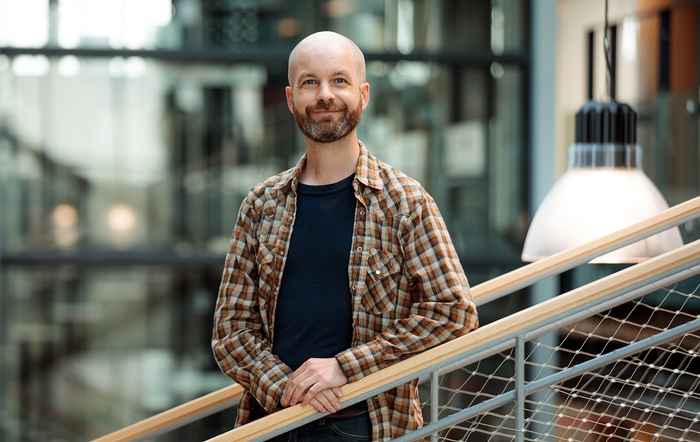Jason Hessels appointed professor of Observational High-Energy Astrophysics, in particular Radio Astronomy
4 May 2021
Hessels’ research focuses on using large radio telescopes to explore the astrophysics of some of the most energetic objects and phenomena in the Universe. Astronomical observations conducted using radio waves and radio telescopes (Radio Astronomy) play a critical role in the study of transient astrophysical phenomena (short-lived and often extremely energetic astrophysical events). Thanks to cutting-edge radio telescopes like the Low-Frequency Array (LOFAR), the field of radio astronomy has entered a new golden age in which the exploration of transient radio phenomena is a key scientific driver. Also called Time Domain Astronomy, the study of how astronomical sources change in brightness - sometimes within milliseconds or less - is a powerful way to probe some of the most extreme astrophysical situations in the Universe, and thereby test fundamental physical theories of gravity, dense matter and cosmology. Hessels’ past research highlights include the discovery of the fastest-spinning neutron star and a hyper-massive neutron star, as well as the discovery and detailed study of repeating fast radio bursts, which are enigmatic radio flashes originating from deep space.
As an UvA professor, Hessels will focus on building the Anton Pannekoek Institute’s (API) existing expertise in this area, and bridging the API’s research programme with that of the Dutch Research Council’s ASTRON (the Netherlands Institute for Radio Astronomy). He and his research group are aiming to decipher the origin of the fast radio burst phenomenon. He also wants to position the API to take advantage of the upcoming next-generation radio telescopes (e.g., the Square Kilometre Array) and to ensure that the API remains world-leading in the field of multi-wavelength, multi-messenger extreme astrophysics.
At the UvA, Hessels will teach both within the framework of the Anton Pannekoek Institute / Faculty of Science joint Bachelor’s and Master’s programmes in Physics & Astronomy, as well as via practica hosted at ASTRON and available to UvA students. He will also teach specialised courses within his particular field, like the Master’s course Radio Astronomy, which covers the science and techniques of radio astronomy.
About Hessels
Hessels received his PhD in 2007 from McGill University in Montreal, Canada. From 2006 to 2008, he was a postdoc at the UvA, funded by Canadian prize fellowships, and from 2014 onwards he has been an UvA associate professor. From 2008 until the present, he has functioned as, consecutively, a junior scientist, associate scientist, senior scientist, head of the Astronomy Group, and now chief astronomer at ASTRON.
He is the recipient of, among others, Veni, Vidi and Vici grants from the Dutch Research Council (NWO) and a European Research Council Starting Grant. Since 2016, he has been a member of the Young Academy of the Royal Dutch Academy of Sciences. He is (co-)author of over 200 refereed publications, and, among other academic activities, has served as a member of the Committee for Astroparticle Physics in the Netherlands, the International Pulsar Timing Array Steering Committee, chair of the Netherlands Radio Astronomy Advisory Committee, and co-chair of the SKA Transients Science Working Group.
